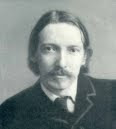
Robert Louis Stevenson
When Robert Louis Stevenson and his wife, Fanny, decided to stay in Samoa in 1889, they bought 127 hectares (314 acres) of virgin land on the slopes of Mount Vaea above Apia and named the estate Vailima -- or "Five Waters" -- because five streams crossed the property. They cleared about 3.2 hectares (8 acres) and lived there in a small shack for nearly a year. The U.S. historian Henry Adams dropped in unannounced one day in 1890 and found them dressed in lava-lavas and doing dirty work about their hovel. To Adams, the couple's living conditions were repugnant. Their Rousseauian existence didn't last long, however, for in 1891 they built the first part of this magnificent mansion.
When it was completed, the big house had five bedrooms, a library, a ballroom large enough to accommodate 100 dancers, and the only fireplace in Samoa. The Stevensons shipped 72 tons of furniture from England, all of which was hauled the 5km (3 miles) from Apia on sleds pulled by bullocks. A piano sat in one corner of the great hall, in a glass case to protect it from Samoa's humidity. Among their possessions were a Rodin nude presented to Stevenson by the sculptor himself, a damask tablecloth from Queen Victoria, and a sugar bowl used by both Robert Burns and Sir Walter Scott.
The Stevensons' lifestyle matched their surroundings. Oysters were shipped on ice from New Zealand, Bordeaux wine was brought by the cask from France and bottled at Vailima, and 1840 vintage Madeira was poured on special occasions. They dressed formally for dinner every evening -- except for their bare feet -- and were served by Samoans dressed in tartan lava-lavas, in honor of the great author's Scottish origins.
Vailima and this lavish lifestyle baffled the Samoans. As far as they could tell, writing was not labor; therefore, Stevenson had no visible way of earning a living. Yet all this money rolled in, which meant to them that Stevenson must be a man of much mana, the mysterious power which Polynesians believed descended directly from heaven to their chiefs (the higher the chief, the more the mana). He was also a master at one of their favorite pastimes -- storytelling -- and he took interest in their own stories, as well as their customs, language, and politics. When the followers of the defeated Mataafa were released from prison, they built a road from Apia to Vailima in appreciation for Stevenson's support of their unsuccessful struggle against the Germans. And when he died in 1894, they cut the "Road of the Loving Hearts" to his grave on Mount Vaea overlooking Vailima.
Stevenson's wife, Fanny, died in California in 1914, and her ashes were brought back to Vailima and buried at the foot of Robert's grave. Her Samoan name, Aolele, is engraved on a bronze plaque.
Samoa's head of state lived in Vailima until hurricanes severely damaged the mansion in 1990 and 1991. Since then, an extraordinary renovation has returned it to its appearance when Stevenson lived here -- without the Rodin. A sitting room matches exactly that seen in a photo made of Fanny on a chair. Another photo of Stevenson dictating is hung in his library, where he stood at the time.
The "Road of the Loving Hearts" leading to Stevenson's Grave passes a lovely cascade that Stevenson turned into a swimming pool. A short, steep trail to the grave takes about 30 strenuous minutes; a longer but easier path takes about an hour. Mount Vaea is best climbed in the cool of early morning.
Here you have the link:
http://www.youtube.com/watch?v=zh9cgRs3oo0
This was shot in one of the few great locations we have in Canberra and sadly it's coming to an end, the Belconnen Bus Interchange. At least I was able to shoot one film there before it turns into nothing but rubble.